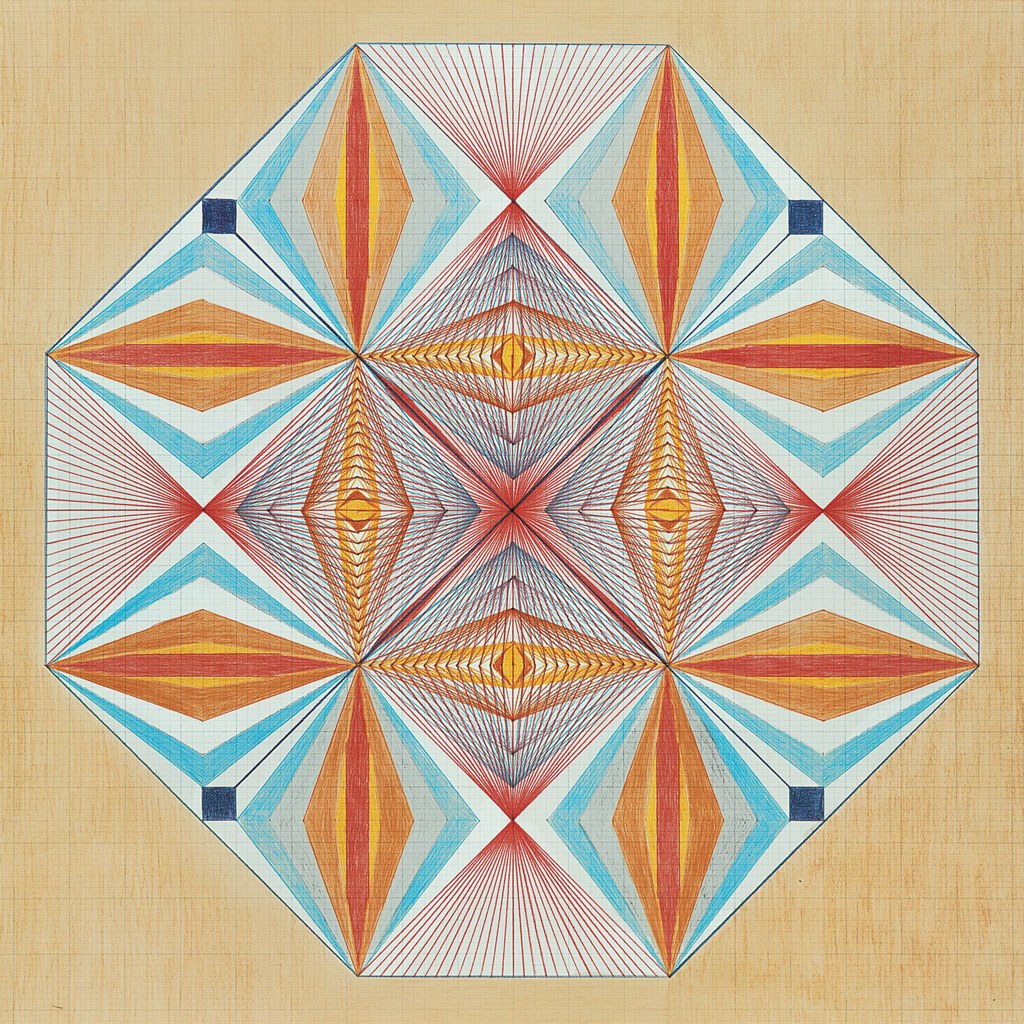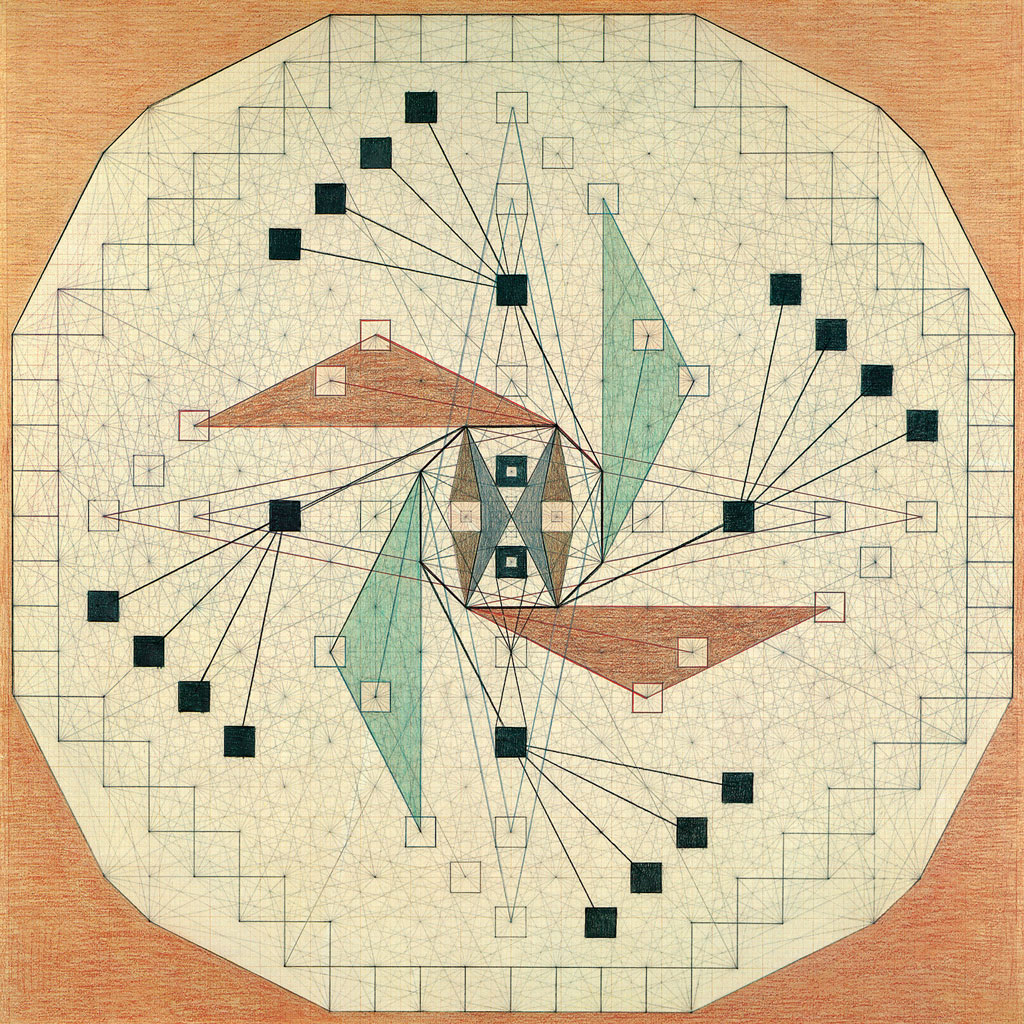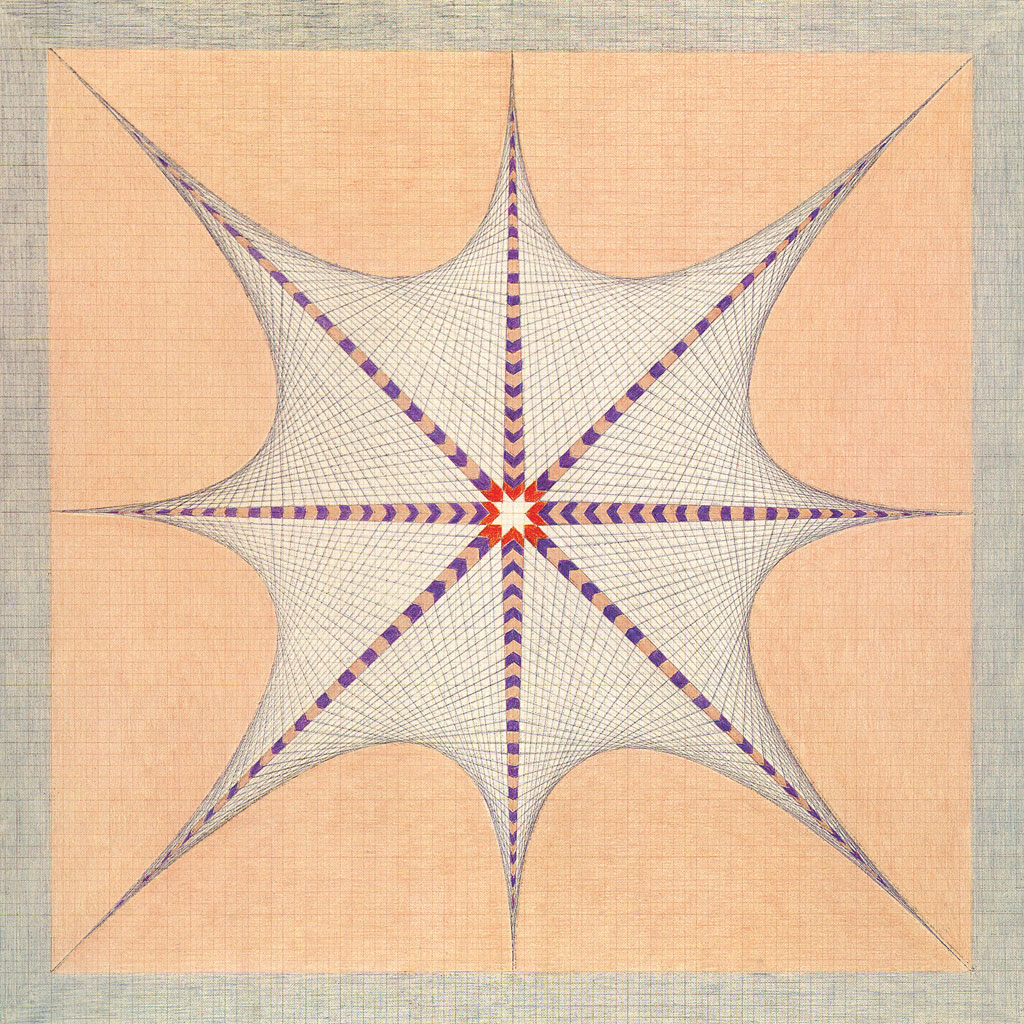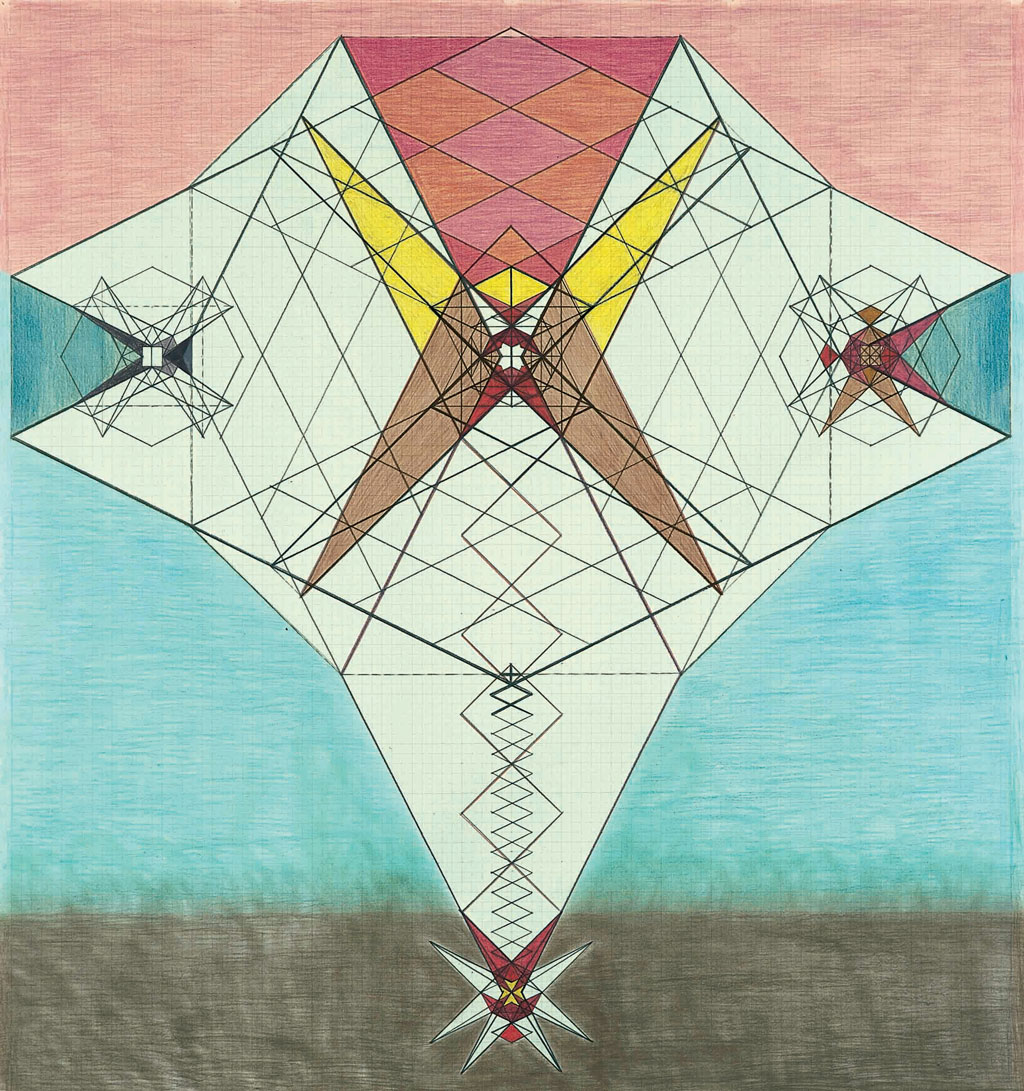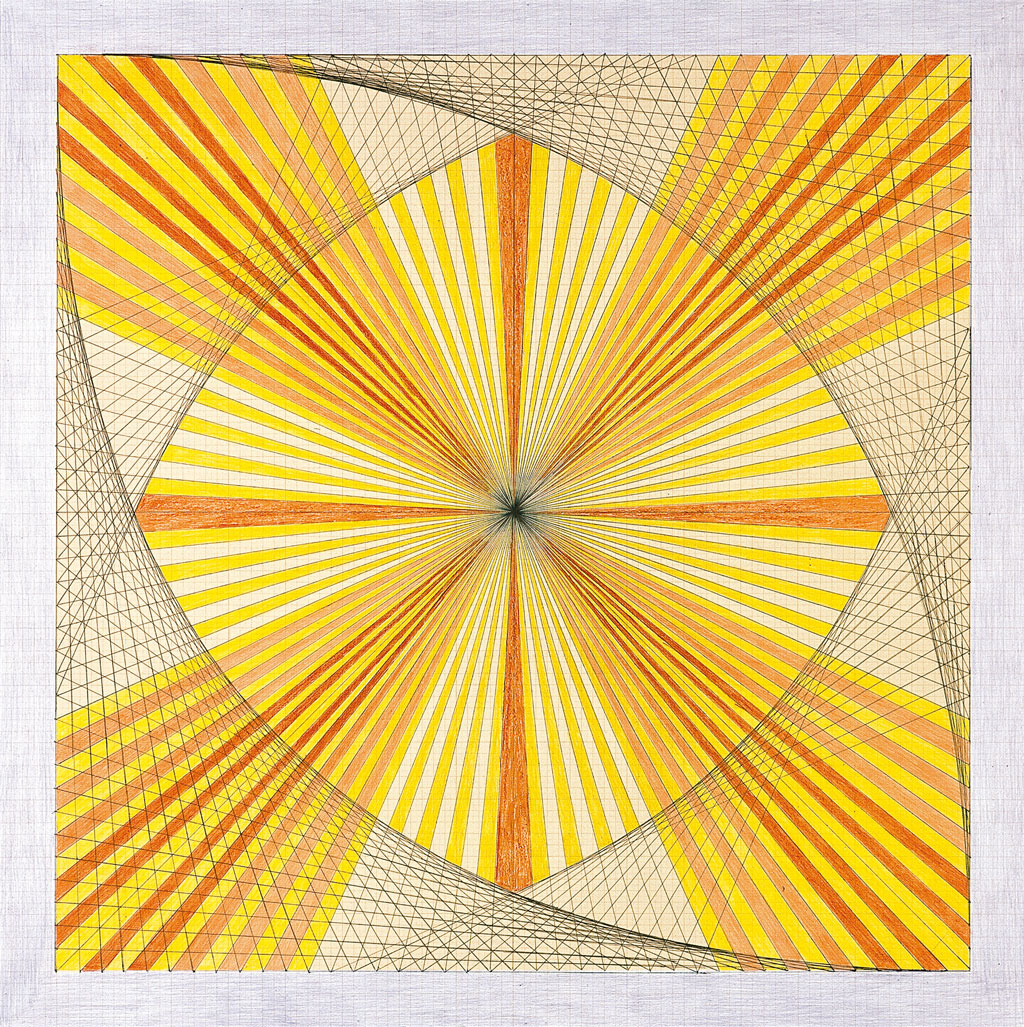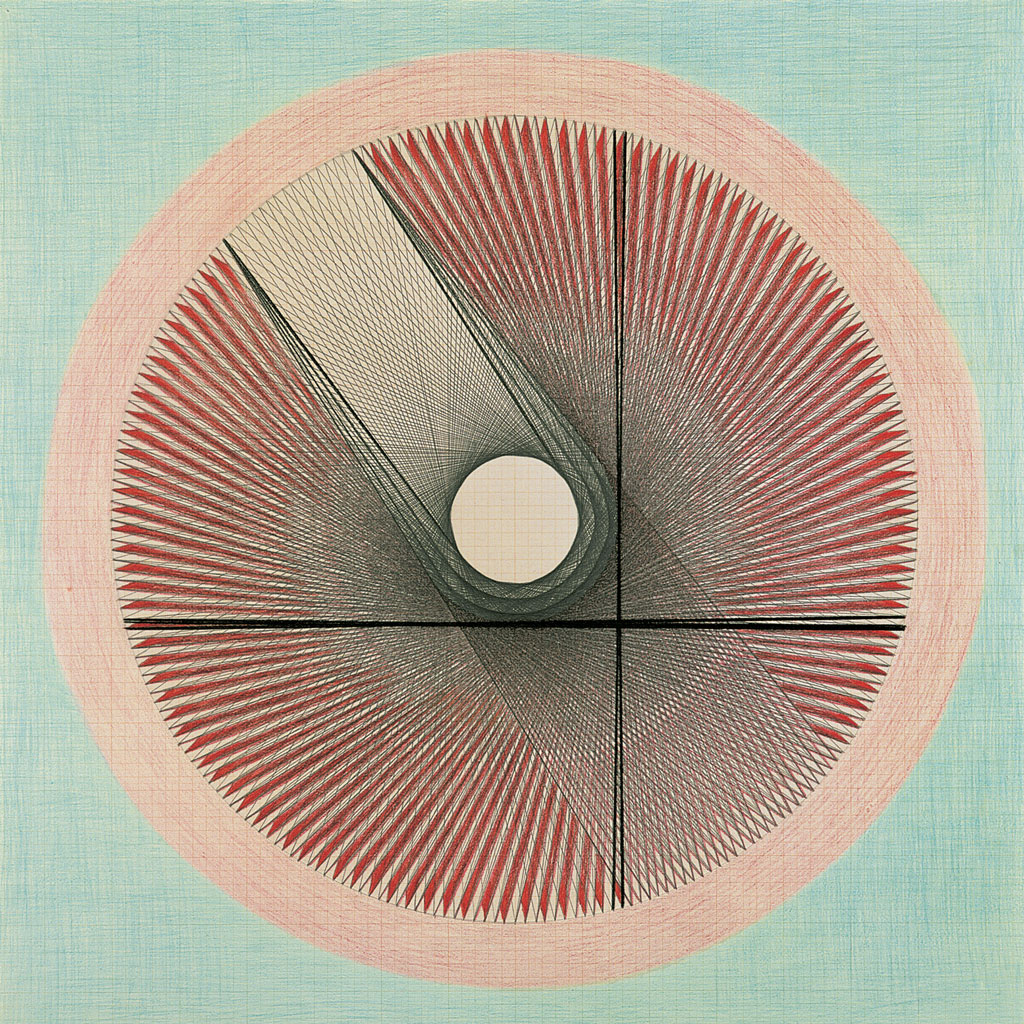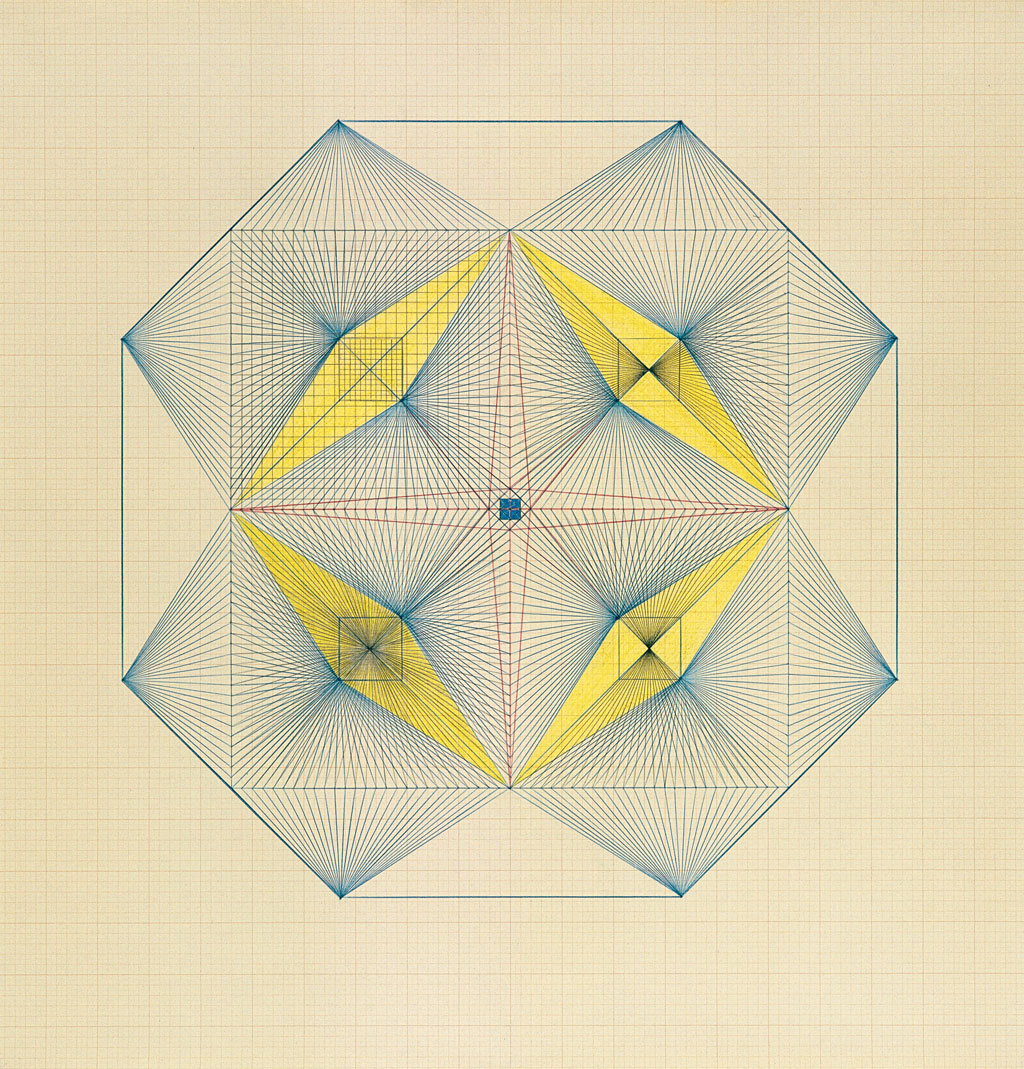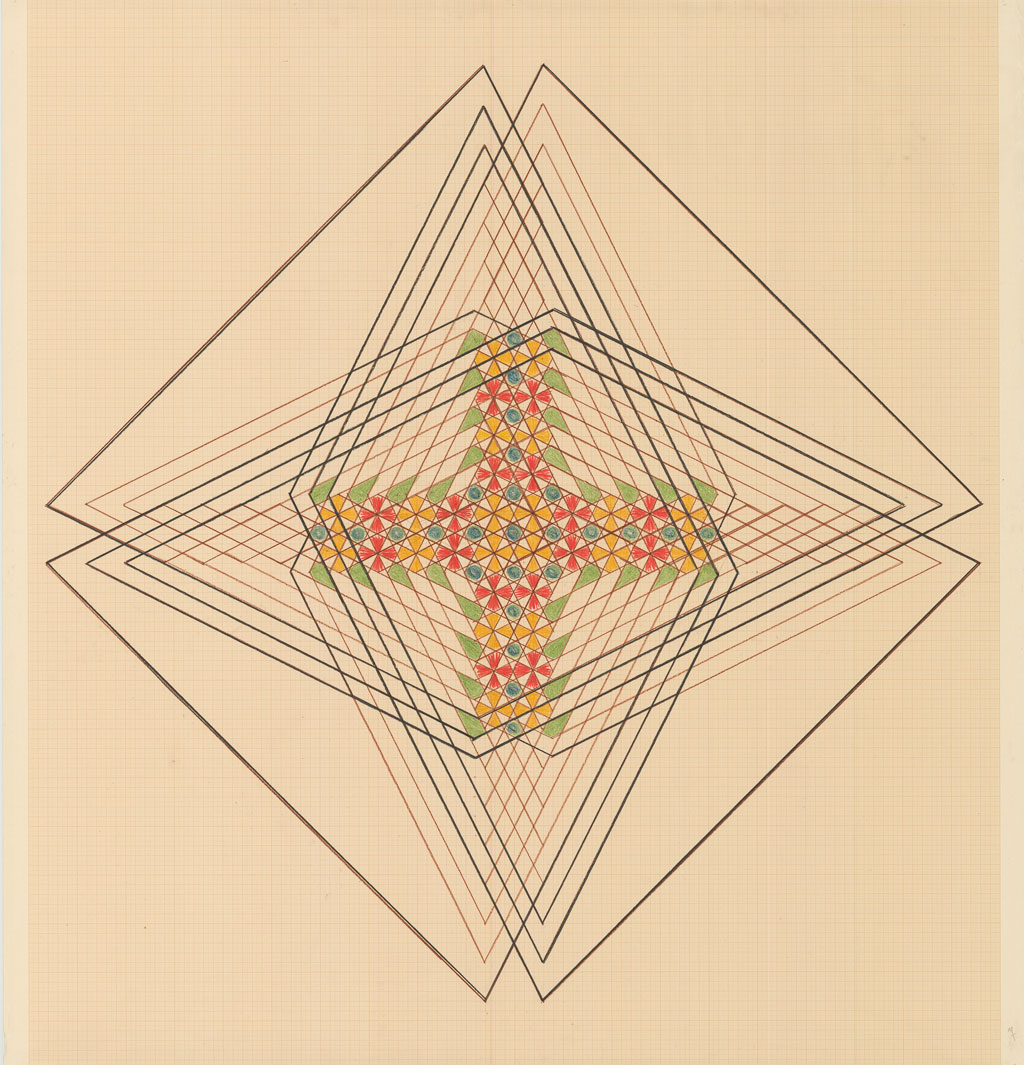ART-PRESENTATION: Emma Kunz-Visionary Drawings
 The visionary Emma Kunz predicted that her legacy of over 400 drawings would be seen and appreciated by future generations, yet she considered herself primarily a healer and researcher of nature. Despite never receiving a formal arts education, she is now considered a prolific pioneer of spiritual art. In her lifetime she self-published three books and produced hundreds of geometric drawings which were first shown posthumously in 1973 at Aargauer Kunsthaus Aarau.
The visionary Emma Kunz predicted that her legacy of over 400 drawings would be seen and appreciated by future generations, yet she considered herself primarily a healer and researcher of nature. Despite never receiving a formal arts education, she is now considered a prolific pioneer of spiritual art. In her lifetime she self-published three books and produced hundreds of geometric drawings which were first shown posthumously in 1973 at Aargauer Kunsthaus Aarau.
By Dimitris Lempesis
Photo Serpentine Galleries Archive
“Visionary Drawings” is the title of the first UK solo exhibition by the late Swiss visionary artist, healer and researcher Emma Kunz (1892–1963) that features over 40 of her rarely seen drawings. In the past, Emma Kunz’s work has been shown alongside Hilma af Klint, Georgiana Houghton and Agnes Martin, all of whom share her preoccupation with spirituality and forms of abstraction. This survey exhibition is a timely review of Kunz’s work which is underpinned by her belief in a holistic worldview. Never shown in her lifetime, Emma Kunz predicted her drawings were destined for the 21st Century. The Serpentine has invited a number of contemporary voices to collaborate on this exhibition, bringing this historic body of work to future generations: The contemporary artist Christodoulos Panayiotou has worked with the Serpentine on the conception of the exhibition and has created new work. Emma Kunz’s drawings are predominantly abstract in structure and form, although a small number are figurative. “Work No. 012”, often referred to as Philosophy of Life, is understood as a diagram of man within the cosmos, an image of Kunz’s worldview. The vertical axis of the drawing signifies the upward path of enlightenment. The horizontal axis, which forms a crucifix, positions man between evil on the left and good on the right, represented by interlocking male and female figures. Man begins existence head downwards in a birth position, within darkness, rising upright to transcendence. Emma Kunz lived and worked in rural Switzerland. She began making pendulum-assisted drawings in 1938 before the outbreak of the Second World War. She would ask the pendulum questions relating to current world affairs such as the outcome of future meetings between political leaders, or Switzerland’s neutral status and on one occasion she attempted to ‘depolarise’ the negative energy of Hitler. While Kunz did not generally date her drawings, or record her interpretations, it is known that “Work No. 020” was made in 1939. Kunz predicted from this drawing that America was developing a weapon capable of destroying the world. She was so alarmed by the potential misuse of this new source of energy that she uncharacteristically interrupted the completion of the drawing to telephone her friend. The prediction came true six years later with America’s catastrophic detonation of Atom bombs on Japan in 1945. The pyramid is an ancient symbol that embodies a powerful connection between the earth and the universe. “Work No. 190” is Emma Kunz’s final drawing, made shortly before her death from cancer in 1963. She wrote: “With this last picture I have opened the seventh chamber of the pyramid. My researches are now finished”. Parallel to her drawings, Kunz was a naturopath and she discovered a healing rock AION A in a Roman quarry in Würenlos, the site today of the Emma Kunz Zentrum and Grotto. The rock is still sold in chemists in Switzerland, mined from the same quarry, and used to treat a host of health issues from joint and muscular pain to inflammatory skin disorders. She also used the pendulum to polarise marigolds in her garden to produce multiple flower heads and documented the result with extraordinary photographs. Geometric abstraction became a means for structuring and visualising her philosophical and scientific research which was not only rooted to her own times and the pursuit of her own restorative practices, but also for the future. The exhibition research and planning has been conceived in conversation with the artist Christodoulos Panayiotou who has a long-term interest in Kunz’s work. Panayiotou’s sculptures often employ materials charged with history, politics or hidden narratives. For this exhibition he is producing new stone benches from which visitors can contemplate Kunz’s drawings. Quarried from the healing rock AION A, these benches bring another dimension of Kunz’s energy to the exhibition.
Info: Serpentine Gallery, Kensington Gardens, London, Duration: 23/3-19/5/19, Days & Hours: Tue-Sun 10:00-18:00, www.serpentinegalleries.org
